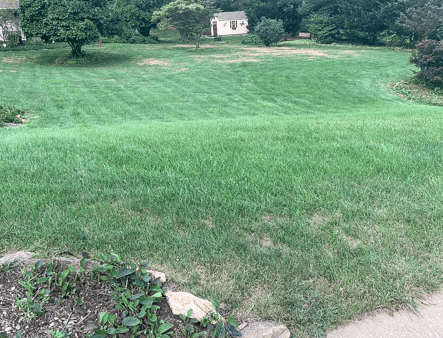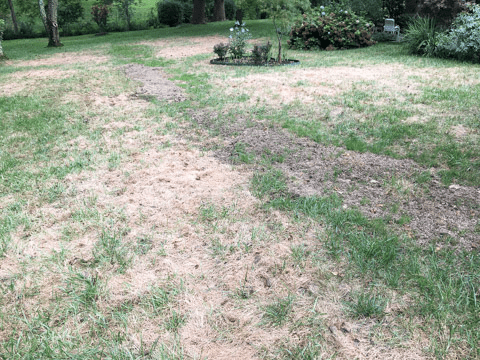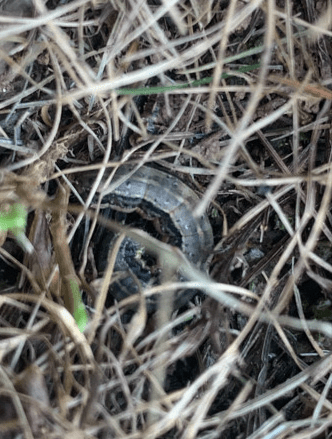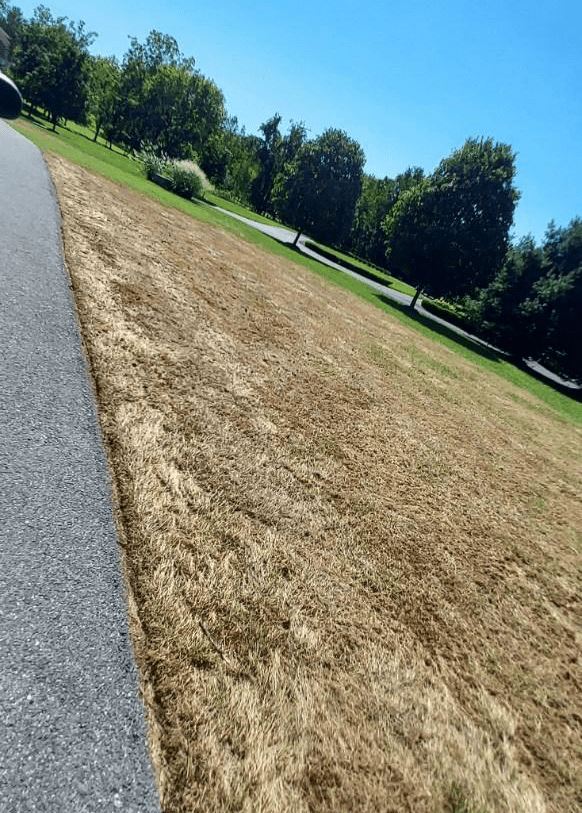Excerpt from the University of Maryland Research & Education Center
Landscape and Nursery IPM Report
Sept. 3, 2021
Fall Armyworm- Hyperactivity
By: Stanton Gill
Wow, the flood of emails on armyworm really came in after our Special IPM Alert on Monday. We had reports of fall armyworm activity in Williamsburg, VA, Arlington Cemetery in Northern VA, North Carolina, Ohio, Illinois, Kansas, Texas and Tennessee. In Maryland, we received reports from throughout the state including activity in Washington County and Garrett County. In Garret County, they were not only damaging turfgrass but also hay fields.
Now, the question is… will fall armyworm continue to be a problem in September? Most of the pictures I received were later instar stages of the fall armyworm. They go through 6 larvae instars then pupate, as I reported in the Monday report. They will pupate in the soil, then adults could emerge and start to mate. This should put potential egg laying from mated adult females at the end of September in Maryland. Since the caterpillars chew on the tops of grass plants, I suspect we should not see the large turf loss we saw in August. In late September, the temperatures should cool down and cool season grasses should be growing vigorously, producing new leaf sheaths and tillers rapidly. This growth should outpace any feeding injury from the fall armyworms. You should examine turfgrass for the small larvae that are greenish with black head capsules in the early instars. If larvae are present, you could apply Spinosad, Provaunt, Mainspring, or Acelepyrn and get very effective control. I
spoke with Nancy Rechcigl at Syngenta Company and she said at 4 oz of Mainspring /100 gallons, you should get 4 – 6 weeks of protection.
The caterpillars feed on the blades and stalks of the grass. The roots and crown should still be intact, and once cool weather is here with rains, the grass should start to produce new replacement shoots. When looking at an area of brown lawn, it is upsetting and the immediate reaction is you should do something right now. The problem is the damage is done. Now you need to be patient and wait for the lawn to recoup. You can reseed in September. Keep in mind that Oregon and Washington State are the two big grass seed producing states.
The weather last year and this year was less than ideal for seed production. This year they had drought, a thermal inversion, and excessively high temperatures. As a result, many seed heads are aborting and dropping prematurely to the ground. The result is seed supplies may be limited this fall. Prices have already shot up 20 – 40%. A bag of seed that was $70 in the spring is now $130 for the same size bag. Again, do not panic and start stocking up on grass seed. The established turfgrass will likely resprout with new shoots as the weather cools down, combined with the rains accompanying all of the tropical storms blowing in from the south.
The damage armyworms are causing…
Joe Perry, American Lawn and Tree Specialist, found
damage in Sykesville and Westminster.
Kevin Nickle, Scientific Plant Service, found damage in Pikesville.
A fall armyworm caterpillar in the turf.
Photo: Joe Perry, American Lawn and Tree Specialist
Will the moths overwinter here in Maryland?
Interesting question – will they overwinter in Maryland? Probably not, but with weather changes we could see a shift. The fall armyworm is native to tropical areas and we generally see it in Florida, Georgia, and parts of Texas, but not as common north of this area for overwintering.
Why are they being found this far north?
The fall armyworm is a strong flier, and disperses long distances annually during the summer months.
The strange weather of August with frequent tropical storms blowing up from the south may have contributed to the outbreak being seen from our state south. The outbreaks in the mid-west could be from adults carried on the southern winds into more northern climates.
Don’t panic, many of the grass crowns will grow in the cooler weather and replenish the lawn as we progress toward October.
A freebie from nature:
Steve Sullivan, LandCare, reported an incredible bird population on his lawn with fall armyworms. He observed the birds feeding on the caterpillars to help reduce the population in his own lawn. Steve Garner, Garner Exteriors, found an area with a high level of fall armyworms in South Anne Arundel County and Calvert County with many brown-headed cowbirds feeding.
Additional Damage Reports:
Bill Quade: We have them in Western North Carolina as well. First time for them.
Joe Perry, American Lawn and Tree Specialists: Came in today and had 2 customers call said lawn browning. Visited both locations in Sykesville and Westminster and saw damage conclusive with FAW.
Eric Wenger, Complete Lawn, Inc: We are seeing armyworm activity in the Rockville/North Bethesda areas – 20852, today (8/31), as well as Darnestown 20874.
Matt Spangler, Lawn Doctor: We’re seeing them in Carroll and NW Baltimore Counties too.
Annette Cormany, UME: I’ve had 2 cases of fall armyworm this week in Washington County. Confirmed
with samples.
Danny Felice, Site One: is getting many calls about the sudden damage to turf from fall armyworms.
Stacie Doffmeyer, Lawn Aide Plus: Just last night received 5 phone calls from customers saying “all of a sudden” my lawn is dead. All located in Carroll County.
Cory Dickinson, ProLawn Plus, Inc. is also finding large areas of damaged turf.
Note the small white tachinid fly egg on the fall armyworm caterpillar.
Photo: Ross Fornaro, Naturalawn of America
Brown-headed cowbirds are feeding in a turf area with an infestation of fall armyworms. This bird often follows cattle and feeds on the insects stirred up by the herd of animals.
Cowbirds lay their eggs in the nests of other birds.
Steve Gardner, Garner Exteriors








